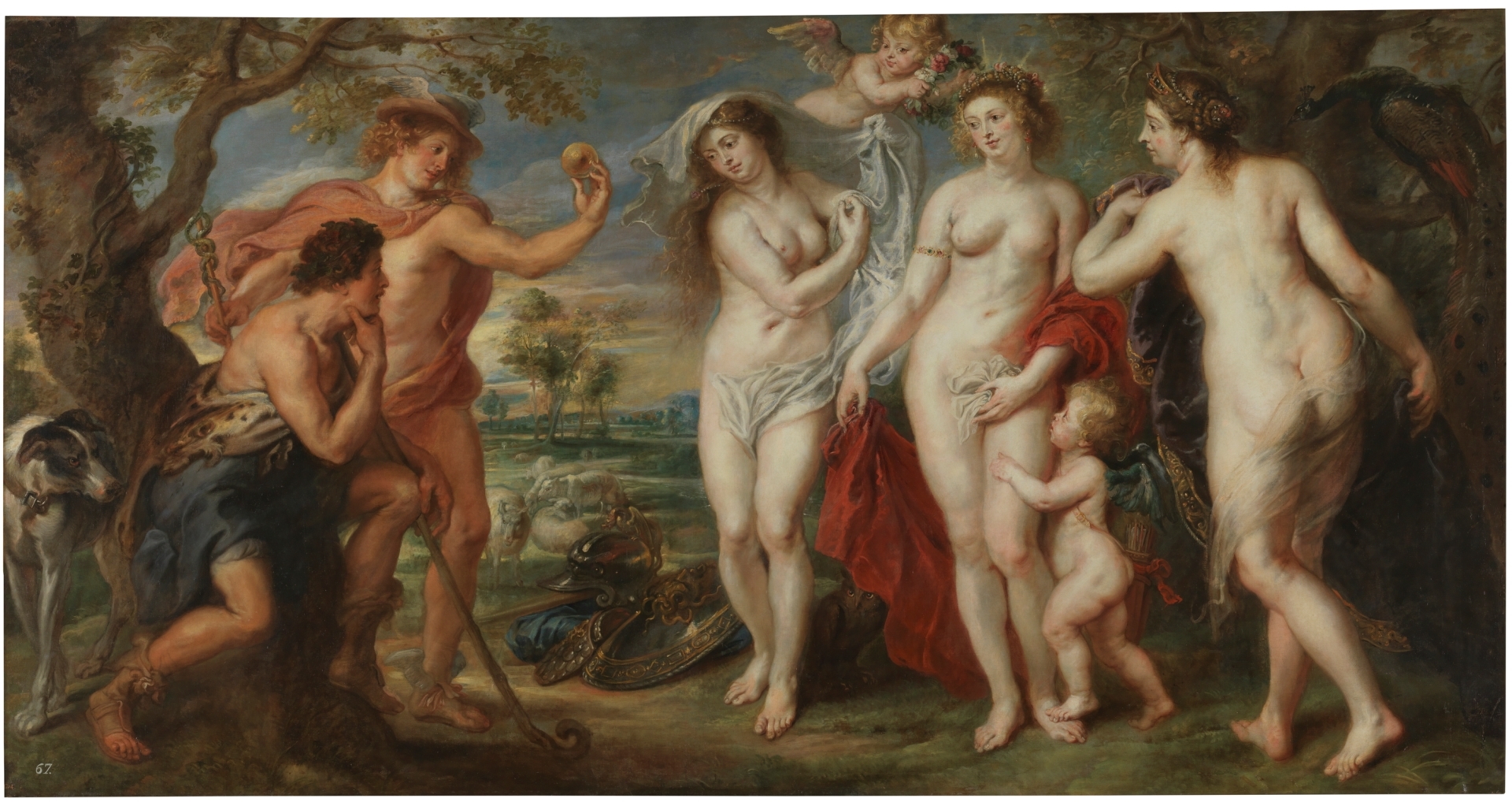On this day in 1577, Peter Paul Rubens, the artist who shaped European Baroque, was born. He was (and still is) famous of his Rubenesque women—and we present a composition with such today. : )
Rubens painted several compositions with this famous mythological scene. It allowed him to display his ideal of female beauty, and to consider the consequences of love and passion. Just to remind you, The Judgement of Paris is a story from mythology about one of the events that led up to the Trojan War. It begins with the wedding of Thetis and Peleus, where Eris, goddess of Discord, tossed a golden apple among the guests with a challenge that it was for the most beautiful goddess. Juno, Minerva, and Venus started to argue and Jupiter decided to give the apple to Mercury and let Paris be the judge of this dispute. This judgment is told by the Roman poet Ovid (in the book Heroides, XVI, 65-88); Paris would choose Venus as the winner. In return, the goddess gave him Helena of Troy (who was already married), provoking the Trojan War.
Painted in 1638 or 1639, this version is now in the Prado and was completed shortly before the artist's death while he was ill with gout. It was commissioned by Philip IV of Spain's brother, Cardinal-Infante Ferdinand of Austria, who considered this one of Rubens´s best works but was concerned about the nudity of the three women. On Ferdinand's death the painting was moved to the Spanish royal collection. In 1788 Charles III of Spain decided it was immodest and ordered it to be burned, but he died before that order could be carried out. Luckily!
See you tomorrow. : )
P.S. If you want to know what we should look like, ask the Three Graces!


 Peter Paul Rubens
Peter Paul Rubens